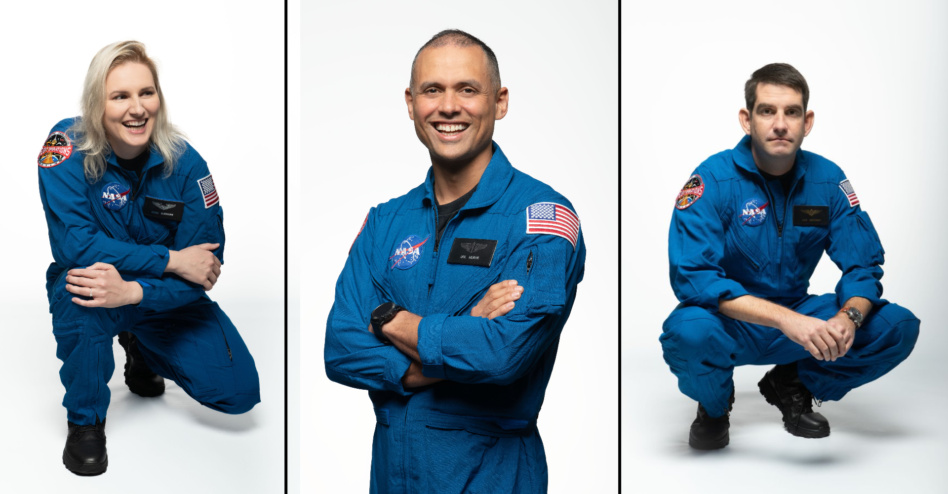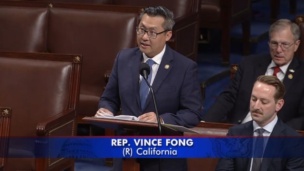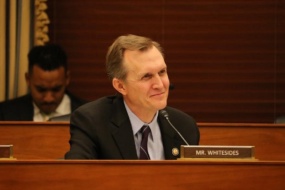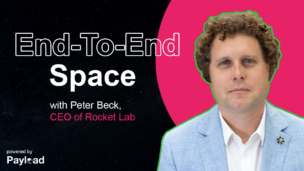Payload spoke with Anil Menon, Deniz Burnham, and Jack Hathaway, three of the ten candidates in NASA’s new astronaut class. The astronauts-to-be talked with us about their unique and winding paths to this point, their passion for space, and their hopes for the Artemis generation of lunar exploration.
- Anil Menon, a US Air Force lieutenant colonel, was SpaceX’s first flight surgeon and helped the company launch their first crewed missions by establishing a medical organization.
- Deniz Burnham, a US Navy lieutenant, has over a decade in the energy industry under her belt and runs an oil rig in Alaska.
- Jack Hathaway is a US Navy commander and naval aviator with more than 2,500 flight hours in 30 types of aircraft.
NB: The interviews were edited for brevity and clarity.
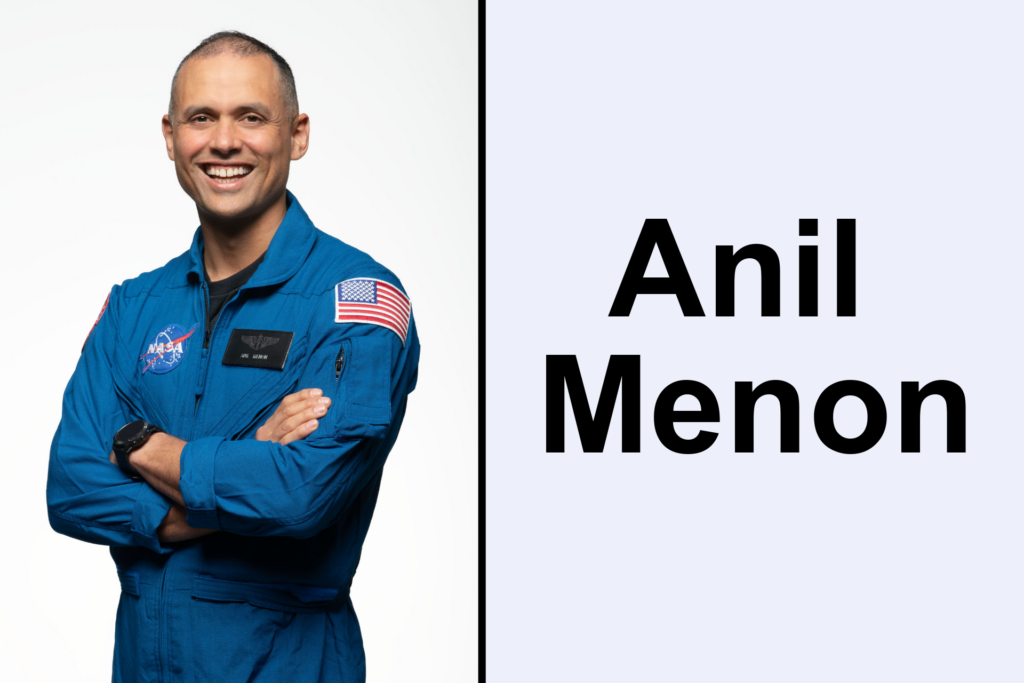
When did you know you wanted to be an astronaut?
Anil: I was one of the people who wanted to do it since I was a kid. Honestly, I was six years old and interested in it. I saw The Dream is Alive, an IMAX movie, at the Minneapolis Science Museum. I saw astronauts in space and thought: ‘This is totally what I want to do.’
Both my parents were immigrants. My dad was from India and he would send us to India to see relatives. I was always in a different spot and I think it spurred this desire to just see new environments and appreciate them. Growing up in Minneapolis, I was in the wilderness a lot. All of that contributed to my love of wilderness medicine and space medicine.
Being a first generation American, what does it mean to be selected as part of the highly prestigious and competitive astronauts corps?
Anil: It means the world and is just such an honor. But it also speaks to the opportunity for folks like me and my parents. We didn’t have a ton of resources, but my folks really did value education as a way to progress here. I’m 45 right now—hard work pays off and dreams can come true if you stay after them.
Looking at your resume, my first question is where do you find the time?
Oh man, my wife and I are super good at juggling schedules. That’s our specialty.
And second question: Can you identify one single experience or job that you think will best prepare you for the mental and physical trials and tribulations of going to space?
Anil: Embracing whatever it is that makes me feel uncomfortable. I’ve worked on that my entire career, and learned to go out of my comfort zone better and better.
What I really liked about working at NASA as a flight doc and then SpaceX as a flight surgeon was all of these new and very difficult challenges. I didn’t think they were even possible and we were able to achieve them.
Any examples come to mind?
Anil: Launching a new research program at SpaceX or becoming a NASA astronaut here. They always seem daunting at first, but I knew I could just work towards them and push into that new zone. I sign up for things that make me uncomfortable, like endurance races. You can build towards those skills. It’s something I always want to retain.
Traveling back in a time capsule to Apollo in the 60s…A lot has changed with technology, the private sector, so on and so forth. From your perspective, what are the throughlines between Apollo and Artemis? What stays the same?
Anil: We have these different propulsion and avionics systems, right? That’s what changes. What stays the same is the human system. Sending people up continues to be a challenging, complex system.
In the Apollo era, we started wireless heart rate monitoring on folks. Now that seems so obvious and easy to do with, say, an Apple Watch.
Of course, I’m most familiar with space medicine and those kind of health metrics, but I really think that the technology is advanced so far. But the fundamental part—keeping people healthy—will always stay the same. The technology has advanced but the fundamental part that will stay the same is keeping people healthy. We’ll use today’s technology to get a better insight to people in space and telemeter that back. We want to understand all of that data as we move forward.
What did you learn from your SpaceX days, preparing for human spaceflight? What did it teach you at private space exploration and the companies that will be increasingly important partners this decade?
Anil: You said it well that SpaceX is just one of the many commercial partners out there. NASA has helped bring that partnership forward. SpaceX is critical to our future spaceflights and one of many. I think as a NASA astronaut, what I’ll be able to rely on from my time at SpaceX is the culture of commercial space and how they approach problems.
In SpaceX’s case, it’s first principles thinking about the requirements. It’s focusing on these challenging, insurmountable problems and making them repeatable, reliable, and even automated in some cases.
To what extent will the private sector play key roles in LEO as certain functions are handed off and NASA goes deeper into space? How much are you thinking about that?
Anil: I think what I see happening is that the partnership is growing stronger and stronger. It’s becoming even more important with HLS, Artemis, and recently, the EVA suits. Those suits are something that outside partners can help work on.
I think the successes that NASA has helped foster in the past are giving increased confidence that those can continue into the future as they think about just new ways of looking at these problems.
America is successful because of that competition, which fosters really good partners, ideas, and out of the box thinking. It’s really cool that I got to see one of those partners of course, through SpaceX.
In a past job, I interviewed one of your soon-to-be colleagues, Jeanette Epps. At the time, there was the infamous LEGO survey that came out and found that kids in America would rather be professional YouTubers than astronauts. To tie this back to Artemis, do you think all of the missions this decade will inspire younger generations to get excited about space and pursue degrees in STEM?
Anil: I hope so. I’m only speaking for my experience, but I was inspired to go into medicine and space by the NASA astronauts that I saw as a kid. That early inspiration drove me into medicine and STEM.
And I think that going to the moon and having a sustainable presence there is going to be something that people always look towards. It’s hard to believe that it won’t be inspiring to kids and get them to go into medicine or engineering or whatever field it is. It will be a positive feedback loop. It’s hard to imagine that a mission to Mars won’t be the most exciting thing happening.
As a NASA astronaut, I hope I’m contributing to this line of people who want to go into STEM and make an impact in different ways.
Because it’s your skillset and life’s work, what types of medical or health research endeavors excite you most over the next decade?
Anil: I’m really excited by some of the technologies that NASA has helped enable that are medical in nature and contribute to research. There’s a portable ultrasound called the butterfly IQ—some NASA funding has helped fly that into space and certify it.
In a small environment, you can get a lot of information from a human being. When we start sending people to the moon sustainably or Mars, we can get that information and make diagnostic decisions that help. That same thing will be the stethoscope of the future on the ground and in space.

We’ve come a long way since the Apollo generation. As we gear up for Artemis, what’s different from a technological and operational perspective and in terms of the challenges you’ll be facing?
Deniz: The Artemis generation has this opportunity to learn from those that went before us. We get to implement this training from the lessons learned of the Apollo. They’re gearing some specialty stuff up, like helicopter based training. Rather than just leaving footsteps, actually going there to live is going to push technology further, and it’s going to be great for not just us but future generations to come.
What did you learn from your experience as a NASA intern, and how did that experience shape your view of the organization of the space program?
Deniz: Well, I was a NASA intern as a graduate student, so it was at NASA Ames with the deployable, autonomous technologies (DAT) group. I got to travel with them to Spain, and we got to do some field work testing out rotary percussive drills. I really enjoyed my time with that group. I think it cemented that these are people that all have the shared passion and vision for bettering humanity. I was just so proud to be an intern and I’m extremely proud to be joining them as a NASA astronaut candidate.
Tell me a little bit about your experience in the energy industry. You’ve worked in the industry for more than a decade. How is that experience related to this new chapter and what lessons are you taking with you?
Deniz: I started off in the Arctic as a field engineer on drilling rigs, and then I actually was a drilling well site leader, so that was kind of my specialty—overseeing the technical aspects of drilling but also managing all the personnel on location. So this teaches you how to be very adaptable and flexible. You have to learn how to do teamwork and collaboration because there’s all these different contractors and very fast paced operations. You’re making real-time decisions, with real time consequences. These are the lessons that I hope to apply to help achieve NASA’s missions.
I read that you like to “fly everything.” How did that influence your decision to join NASA’s astronaut class?
Deniz: Along the same lines, that’s real time operational experience. You’re not just flying—you have to communicate and navigate, too. From a very young age, I was very passionate about flying, and so I got my fixed wing helicopter license in Alaska. And then I did my instrument rating in Alaska for fixed wing. I fly paragliders up there, using some of the training from learning to fly seaplanes in Maine. So I’ve kind of gotten to pursue different types of flying at various training schools, but I think it always comes back down to skills that keep you on your toes. But also you’re pursuing something that’s life enhancing. So whether or not this path had worked out, I was just enjoying the ride.
What motivated you to become an astronaut? What was the tipping point?
Deniz: I always had the dream. So my grandfather had a big love of telescopes and astronomy. And so as a little kid, you know, he’d sit there and show me Mars and the rings of Saturn in my own backyard. And the images, like the size of your pinky nail, touched your heart differently. It did inspire me and I knew that as long as I stay that course, there’s always a chance. Why rule yourself out? So this wasn’t my first application. And I encourage others to have the same goal. Don’t give up—just keep trying.
NASA is collaborating with commercial space more than ever before. What are your thoughts on the shift towards more private sector involvement in space?
Deniz: I think it’s great, and exciting to have more people get the opportunity to go to space. This also allows NASA to focus on other missions, right? So they get to leave the low Earth orbit and now they get to go focus on returning to the Moon.
What are your personal goals heading into astronaut training, and what challenges do you think you’re going to be facing?
Deniz: I’m just so excited to get started with my classmates. I know they’re extremely talented individuals. There are different components of the training: ISS systems, Russian language, T-38 flying, learning how to spacewalk in the neutral buoyancy laboratory—I hear that’s pretty challenging. But having some slight background, I’m very excited for the T-38 portion.
How do you think that Artemis can inspire younger generations the way that space has inspired you to get to this point in your life?
Deniz: Returning to the Moon is going to just enable us to keep pushing further and further for space exploration. So I think this is something that’s going to open up people’s imaginations, but also new technologies will be developed, right? So at the end of the day, it’s making life better for others on Earth. Not everybody has to have that same goal of becoming an astronaut.
Everybody has a place in space. I think this is what’s most exciting—all the people that get to enter the industry with whatever background they do have, and contribute to the missions.
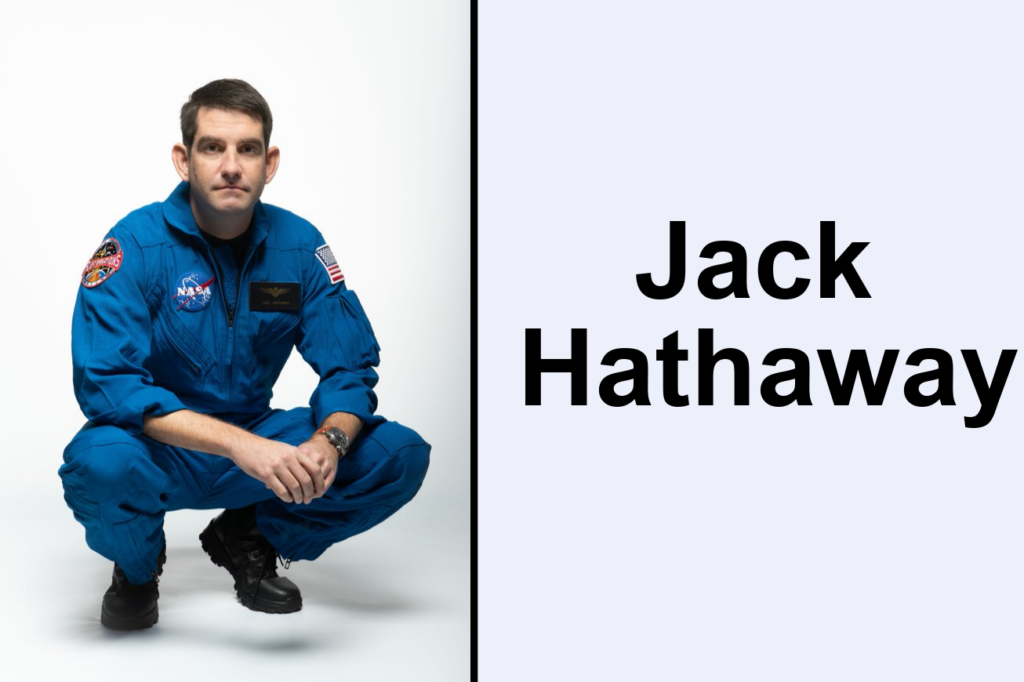
How did it feel to find out that you’ve been selected as an astronaut candidate?
Jack: Oh, it’s such an honor. Going through the interview process, the different rounds of people, everyone I met was just so incredible. Every time you show up here for an interview, you’re like, “Wow, that’s it. I had a great week, but there’s so many excellent people around me. There’s no chance I’m going forward.” To be part of groups like that, and then in the end, to get a phone call with really great news, it’s just an incredible feeling. You’re honored.
We’ve come a long way since the Apollo generation. As we gear up for Artemis, what’s different from a technological and operational perspective and also in terms of the challenges that you’ll be facing?
Jack: There’s a lot of differences between the Apollo and the Artemis generations but there’s also a lot of similarities. I mean, sure, the technology is going to be different. But people are the same, with that spirit of exploration. That’s not any different than it was back then. Really, our generation is just standing on the shoulders of those giants. From that incredible hard work with very limited technology compared to what we have available to us in the modern day. We’re super excited to take all the lessons NASA has learned from both generations over time.
They put footsteps on the Moon. We’re going to put the first woman and person of color on the Moon, and do it in a sustainable way so we can learn how to live and operate out there.
How do you see your role in the Artemis generation as a stepping stone for the next generation of space?
Jack: My role as stepping stone to the next generation actually is one of the most important things to me. I’m a Navy pilot by background. In the Navy, it’s essentially a relay race. We’re only in a squadron for a couple of years. The guys and girls before me trained me to be a great pilot instructor. I got to train the next guy. The most important thing I can do in this job is to make sure that the people who fill my shoes are good.
I’m also so excited about the opportunity to inspire the next generation. My cousin just told me my niece wants to be an astronaut now. In 50 or even 20 years, who knows what will happen. I can’t wait til I’m an old man sitting in a rocking chair watching what the next generation is doing.
You’ve had a long career with the US Navy as a naval aviator. What lessons have you learned from that experience that you’re carrying with you into astronaut training?
Jack: We’re very mission focused in the Navy. It’s an incredibly dynamic, complex environment. We prepare before we go, then afterwards, we’ll spend hours looking at the tapes and listening to the recordings to pick out the things we could have done better. Because the perfect flight is elusive. It never actually happens. There’s always something that you can do better. I want to take that passion to do as well as humanly possible, and that passion to learn as much after the fact as possible so we can be better next time, and bring it into NASA.
NASA is collaborating with commercial space more than it ever has before. What are your thoughts on the shift towards more private sector involvement in space?
Jack: I’m excited about everything happening in space. Our commercial partners in low Earth orbit are going to free NASA up to focus on the Moon. We’ve gotta use everything that we’ve learned to expand our knowledge of sustainable living on spheres in the solar system that aren’t Earth, learning how we live there so we can get to the next one and move on. We’re going to learn about the gateway that’s going to operate around the Moon, learn more about space station science. I think it’s an incredible opportunity that commercial partners are operating in a way that NASA is able to focus on the bleeding edge.
What are your goals going into astronaut training?
Jack: Just like I was always trying to be the best fighter attack pilot I could be, I’m going to try to be the best astronaut candidate and NASA astronaut that I can be. I’m going to spend my next two years of training trying to learn as much as I can and get all the details and procedures into my head. I’m so excited to be part of this team and to get to know the people that I’m going to go to space with. What an incredible goal, what an incredible life.
